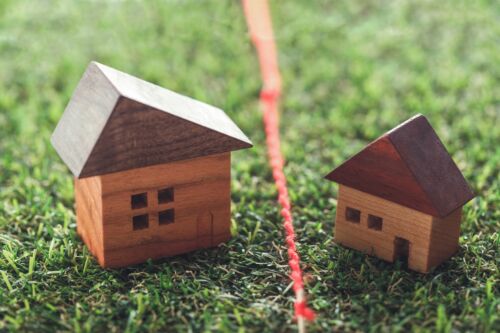Resolving Property Line Disputes

Conflicts over property lines and boundaries are common occurrences. Many property line disputes between neighbors can be amicably resolved with a conversation — but some disagreements can become contentious. Whether the conflict arises in connection with an unclear boundary, use of an easement, an encroachment, or another issue, it’s important to understand your rights and how to protect them. While a skillful property dispute attorney can best advise you regarding the specific facts of your situation, the following are several steps to take when it comes to resolving property line disputes in North Dakota.
1. Understand the Nature of the Property Line Dispute
It’s essential to fully understand the nature of your property line dispute from the outset. Sometimes, these types of disputes stem from months or years of anger between neighbors. But often, they are simply a misunderstanding that can easily be cleared up. A conversation or letter may pave the way for a quick, inexpensive, and civil resolution without involving the court.
2. Gather Evidence to Support Your Claim
When faced with a property line dispute, it’s critical to gather evidence to support your claim. Be sure to have a copy of your deed, any surveys that were conducted, plat maps, and other documents that show the boundary lines on your property. Previous written agreements or contracts between you and your neighbor can also be relevant — as well as testimony from past owners or long term residents in the area who may have knowledge of the boundary lines.
3. Conduct a Boundary Line Survey
In a dispute over a boundary, it’s typically a good idea to hire a surveyor to identify the precise location of your property lines. The surveyor will provide you with documented proof of their findings. This report can offer an objective determination of boundaries and serve as a key piece of evidence when resolving a property line dispute.
4. Attempt to Resolve Your Property Line Dispute Outside of Court
The surveyor’s report may be all the proof your neighbor needs to prompt a resolution. Once you and your neighbor have reached a settlement regarding ownership of the property, a deed can be drafted that identifies the boundary lines — or another appropriate agreement can be entered into. In some cases, mediation can be a useful tool to help facilitate communication and provide a framework to reach a resolution. It can also help the parties find creative solutions that might not be available in the courtroom.
5. Send a Demand Letter
If your attempts to resolve the dispute have failed, it might be necessary to retain a boundary line dispute lawyer who can protect your interests and assist you with reaching a settlement. However, before litigation can commence, a demand letter should be sent. This document is a formal communication that explains to your neighbor what the issue is and requests that they take specific action to resolve the dispute. Although a demand letter is not the lawsuit itself, it shows the court that you attempted to resolve the dispute in good faith before seeking judicial intervention.
6. File a Lawsuit if a Resolution Cannot Be Reached
Resolving property line disputes outside the courtroom can curtail legal expenses and help preserve your relationship with your neighbor. However, if attempts to settle the dispute are unsuccessful, it may be necessary to file a lawsuit. If your neighbor refuses to acknowledge the boundary, will not remove an encroachment, or you risk losing your property rights through adverse possession if timely action is not taken, litigation may be your only option.
7. Work to Reach a Settlement
Even if litigation is commenced, not all property line disputes proceed to trial — most settle out of court as a result of negotiations with each party’s attorney. A settlement agreement might involve dividing the property, modifying the boundary lines, or providing monetary compensation to resolve the dispute. If you reach a resolution with your neighbor, it’s vital to document the agreement in writing and submit it to the court to become a binding order. You may also need to file a new deed or other documents with the appropriate state or local agency.
Contact an Experienced North Dakota Property Line Dispute Attorney
Property line disputes can be complex — it’s crucial to have an attorney by your side to guide you through the process of resolving your conflict and protect your interests. If you cannot reach a resolution with your neighbor regarding a boundary line, encroachment, or easement conflict, the attorneys at Fremstad Law can assist you with moving forward. Contact us today to schedule a confidential consultation to discuss your situation and learn how we can help.
